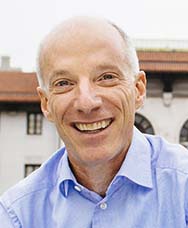What are the most promising approaches to providing water in a hotter, drier world?
At a time of uncertain water supplies, how can we get the most use of our water? By passing water through a material called a reverse osmosis membrane, adding a small amount of hydrogen peroxide and exposing it to ultraviolet light, engineers in Orange County, California have been turning what used to be considered useless wastewater into drinking water for more than 25 years. The practice, called potable water recycling, is spreading. David Sedlak’s research team at Berkeley has developed technologies to improve the treatment processes. They can detect and further treat trace amounts of chemical contaminants that might make it through the recycling process. But more must be done, he says. By investing in our neglected water infrastructure and replacing large, centralized treatment plants with more dispersed, automated plants, we would move a long way toward making the most of what is becoming our most precious resource.
 David Sedlak
David Sedlak
David's research focuses on the fate of chemical contaminants, with the long-term goal of developing cost-effective, safe, and sustainable systems to manage water resources. The author of Water 4.0, he is particularly interested in the development of local sources of water and develops new approaches for managing the urban water cycle. Read more.
